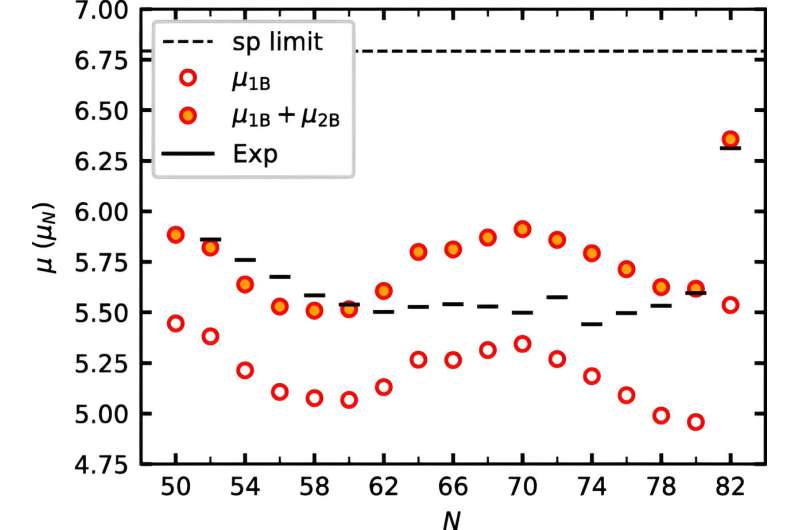This article has been reviewed according to Science X's editorial process and policies. Editors have highlighted the following attributes while ensuring the content's credibility:
fact-checked
peer-reviewed publication
trusted source
proofread
Understanding the interior of atomic nuclei

There is a lot going on inside atomic nuclei. Protons and neutrons are whizzing around and interacting with each other. The movement of the nuclear particles and their intrinsic angular momentum induce magnetic moments. Together, this can make atomic nuclei tiny magnets.
"Using laser spectroscopic methods the magnetic moment of even exotic, short-lived nuclei can be determined very precisely," explains physics professor Achim Schwenk from TU Darmstadt. As a theoretical physicist, he is interested in a first principles description of nuclei.
However, the calculations of magnetic moments have not yet been satisfactory. The experimentally measured and calculated values differ for many nuclei.
Schwenk's team has now achieved a breakthrough. The calculated values of the magnetic moment are in better agreement with the measured values than ever before, as the researchers show in a paper published in the current issue of Physical Review Letters.
The new calculations work for nuclei ranging from relatively light elements such as oxygen to heavy elements such as bismuth. "It was important to us that we cover a wide mass range," says Schwenk.
Significant impact of two-body currents
Dr. Takayuki Miyagi, first author of the publication, who was a postdoctoral researcher in Schwenk's group until recently and is now an assistant professor at the University of Tsukuba in Japan, made significant contributions to the success of the project.
Rodric Seutin also provided important input for the calculations. As part of his doctoral thesis at TU Darmstadt, he took into account in calculations for light nuclei that nuclear particles interact with each other during the measurement of the magnetic moment.
In laser spectroscopy, a photon couples to a nuclear particle. The fact that the nuclear particle simultaneously interacts with other protons or neutrons has so far been ignored. The coupling of photons to interacting nuclear particles can be taken into account by considering so-called two-body currents.
Two-body currents flow when protons and neutrons exchange charged particles during the interaction. Theories of electromagnetic and strong interaction consistently predict this. "Taking two-body currents into account has significantly improved the calculation of magnetic moments," explains Miyagi.
Of fundamental importance for subatomic physics
"We have now taken a decisive step forward in the description of atomic nuclei," summarizes Schwenk. "The electromagnetic properties and therefore also the behavior of nuclei with electromagnetic fields are understood, now we can tackle the next questions."
Two-body currents are of fundamental importance in nuclear and particle physics, he adds, citing neutrino research as an example. In order to determine the properties of these elementary particles, their interactions with atomic nuclei can be key.
There is still a lot to discover in the subatomic world. The research is complex and benefits from international cooperation. In addition to physicists from TU Darmstadt, researchers from Johannes Gutenberg University Mainz, University of Illinois at Urbana-Champaign, Massachusetts Institute of Technology and the Canadian research center TRIUMF in Vancouver also took part in the current study.
More information: T. Miyagi et al, Impact of Two-Body Currents on Magnetic Dipole Moments of Nuclei, Physical Review Letters (2024). DOI: 10.1103/PhysRevLett.132.232503
Journal information: Physical Review Letters
Provided by Technische Universitat Darmstadt





















